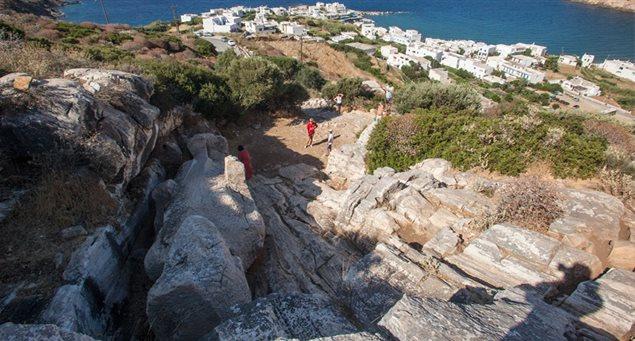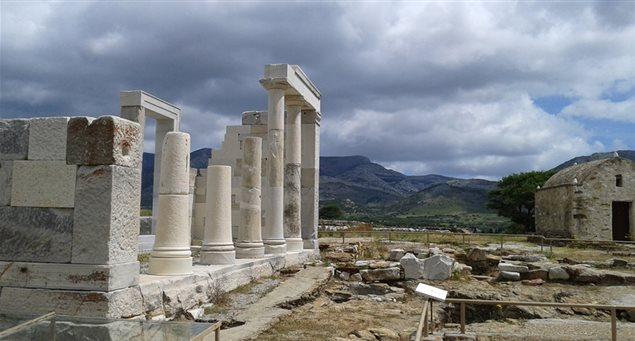
The famous myth of the marriage of the god of merriment Dionysus and princess Ariadne is centered on Naxos.
According to the myth — as narrated by the ancient historian Diodorus Siculus — Theseus, son of the king of Athens, killed the Minotaur, the monster bull of king Minos of Crete which was meant to devour him, with the help of the king’s beautiful daughter, Ariadne.
Escaping back to Athens, Theseus took Ariadne with him. Rough weather forced them to stop for a rest at Naxos, which was then named Dia. Theseus anchored his boat at Palatia, the small islet off Naxos harbor, where Ariadne, exhausted, fell asleep on the beach.
Theseus and his mates slept in the boat. Dionysus, who had seen Ariadne and fallen in love with her, visited Theseus in a dream and told him to get away without her. He initially objected but, fearing the consequences of disobeying the wishes of a god, was forced to leave.
Dionysus approached sleeping Ariadne and awakened her, whispering sweet words to her ear. Surprised, she immediately asked where Theseus was but was told that he had left.
The god of merriment then gave her wine to drink from a golden cup and offered her a golden wreath –the work of god Hephaestus – adorned with Indian gems arranged like nine stars.
According to one version of the myth, the wreath was a gift of the goddess of love, Aphrodite, and the Ores –deities of time and the seasons- for the marriage. Indeed, it was supposed to be so bright that the gods raised it on the sky as a constellation and named it Ariadne.
Angry with Theseus for abandoning her, the princess accepted Dionysus’ proposal.
He led her away to Mt. Drios — present-day Koronos — on Naxos, and from there to Mt. Olympus, “official” residence of the gods.




